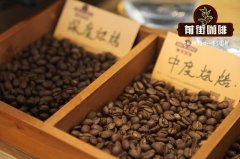Yemen famous coffee beans Yemen mocha price How much does Yemen's best coffee beans come from?

Professional coffee knowledge exchange more coffee bean information please follow the coffee workshop (Wechat official account cafe_style)
It is said that the wave of fine goods is the revival of "technology replacing machinery", but the market is still inseparable from what dominates supply and demand. Downstream operators will use different punching methods to express different coffee styles, and upstream farmers will also develop characteristic treatments in response to market trends. But it turns out that there is a country in the world that has been producing coffee in the most primitive way since the sixth century, and it is Yemen.
Yemen is located in West Asia, only one step away from the African continent. Without the promotion of Islamic priests in the Arabian Peninsula, coffee might still be a wild plant in Ethiopia. Legend has it that coffee was introduced when it was ruled by Ethiopia in the sixth century and was named Qahwa, which means red wine in Arabic. The post-Ottoman Empire invaded in 1536 and controlled the coffee trade. In order to protect export earnings, the authorities strictly prohibit the export of raw beans, and the seeds must be boiled in boiling water before leaving the country.
Until the sixth century AD, Yemen was called Arab, so coffee trees shipped from Yemen to other places were also called Arabian coffee trees. The origin of these trees is Ethiopia (Ethiopia), and the Dutch spread these coffee trees all over the world. Dutch businessmen heading eastward around the Cape of good Hope began to make a long journey.
Before wading to India, you have to pass through the east coast of Africa to the port of Mocha in Yemen. In 1696 the Dutch introduced the coffee tree to Ceylon (now Sri Lanka) and then to Batavia in Java. Yemeni mocha beans are smaller and rounder than most, which makes Yemeni mocha beans look like peas-in fact, bean-shaped berry coffee beans (Peaberry bean) are sometimes called Yemeni mocha beans. The shape of the Yemeni mocha beans is similar to that of Ethiopia's Harrar coffee beans, with small particles, high acidity and a hint of chocolate, so the attempt to add chocolate to the coffee is a natural development. In Yemen, coffee growers plant poplars to provide shade for coffee trees to grow. As in the past, these trees are planted on steep terraces to maximize the use of less rainfall and limited land resources. In addition to Tibica and bourbon coffee trees, more than a dozen different coffee species native to Ethiopia are grown in Yemen. However, even the best coffee, such as premium mocha, is air-dried and the peel is connected to the beans. Until now, traditional stone mills are often used to remove dry and hard shells, which makes the shape of coffee beans very irregular and often damages them. Although the Yemeni coffee beans are of high quality and slippery aroma, there is something unsatisfactory, that is, the quality can not be continuously guaranteed, and the classification of the coffee beans is uncertain. Traditionally, the best coffee beans in Yemen come from Mattari, followed by Sharki, followed by Sanani. These producing areas are treated by the sun, so the coffee beans have a wild flavor. Generally speaking, the Yemeni coffee beans have a unique character, wild, complex and exciting, especially the charming sour wine and deep dark chocolate flavor. These beans are low in caffeine and are exported from December to April of the following year. The problem in the past has been that coffee from the north was mixed with shoddy stuff before it was shipped from the southern port of Aden. Only coffee shipped from the port of Hodeida can be determined to come from the north.
Yemeni coffee bean brand recommendation
The Yemeni mocha beans baked in Qianjie Coffee are fully guaranteed in terms of brand and quality. And more importantly, the performance-to-price ratio is extremely high, a pack of 227 grams, the price is only 85 yuan. According to the calculation of 15 grams of powder per cup of coffee, a bag of coffee can make 15 cups of coffee for less than 6 yuan each, which is recommended by conscience compared to the price of tens of yuan a cup sold in a coffee shop.
Important Notice :
前街咖啡 FrontStreet Coffee has moved to new addredd:
FrontStreet Coffee Address: 315,Donghua East Road,GuangZhou
Tel:020 38364473
- Prev

A brief introduction to the Development History of Wikipedia Yemeni Coffee is Yemeni coffee good?
Professional coffee knowledge exchange more coffee bean information please follow the coffee workshop (Wechat official account cafe_style) mocha Mocha Coffee refers to five kinds of mocha 1. The first export port of coffee-the Yemeni port of Moka (the vanished harbor) 2. Coffee brewed in a mocha pot. An Italian latte with chocolate. The origin of coffee-mocha coffee from Hara, Ethiopia
- Next

What does Yemeni coffee bean brand Shanani Sanani mean? is Yemeni mocha coffee beans expensive?
Professional coffee knowledge exchange more coffee bean information please follow the coffee workshop (Wechat official account cafe_style) Yemeni coffee bean brand-Mocha Shanani coffee beans Yemen Mocha Sanani Sanani mentioned Yemeni and Ethiopian coffee beans, many people will think of mocha (Mocca,Mocha,Moka,Mokha,Mokka anything you can see, pronounced Mocha
Related
- Detailed explanation of Jadeite planting Land in Panamanian Jadeite Manor introduction to the grading system of Jadeite competitive bidding, Red bid, Green bid and Rose Summer
- Story of Coffee planting in Brenka region of Costa Rica Stonehenge Manor anaerobic heavy honey treatment of flavor mouth
- What's on the barrel of Blue Mountain Coffee beans?
- Can American coffee also pull flowers? How to use hot American style to pull out a good-looking pattern?
- Can you make a cold extract with coffee beans? What is the right proportion for cold-extracted coffee formula?
- Indonesian PWN Gold Mandrine Coffee Origin Features Flavor How to Chong? Mandolin coffee is American.
- A brief introduction to the flavor characteristics of Brazilian yellow bourbon coffee beans
- What is the effect of different water quality on the flavor of cold-extracted coffee? What kind of water is best for brewing coffee?
- Why do you think of Rose Summer whenever you mention Panamanian coffee?
- Introduction to the characteristics of authentic blue mountain coffee bean producing areas? What is the CIB Coffee Authority in Jamaica?

